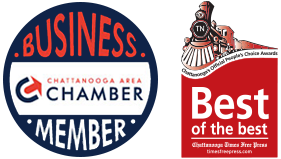When it comes to employee benefits compliance, employer size matters, and not just for budgeting and staffing purposes. Different laws and filing requirements kick in once you hit certain employee thresholds. To make things even more complex, your “size” isn’t always just about how many people are on your payroll. Controlled group rules can require you to combine employees from related companies, changing which regulations apply to you.
Below, we’ll break down some of the key compliance areas: COBRA, Medicare Secondary Payer, the Affordable Care Act (ACA), and Form 5500 filings along with how employer size is calculated for each.
What is a Controlled Group?
A controlled group exists when two or more companies are related through common ownership and must be treated as a single employer for employee benefit compliance purposes. There are three main types: parent-subsidiary, brother-sister, and combined groups. When calculating group size for compliance purposes (such as ACA or COBRA), all employees of the controlled group’s entities are counted together, not separately by company.
Even if companies don’t meet the ownership tests to be a controlled group, they may still be considered an affiliated service group (ASG). An ASG typically exists when companies are connected through the performance of services for each other or together for third parties, or when there is significant overlap of ownership and key employees. Like controlled groups, ASGs must also aggregate employees across all entities for benefit plan and compliance purposes, meaning they are treated as one employer.
COBRA – 20 Employees
- Who must comply?
- Employers with 20 or more employees on more than 50% of typical business days in the previous calendar year.
- How to count employees:
- Both full-time and part-time employees count.
- Part-time employees are added together to equal “full-time equivalents” (i.e., two half-time employees = one full-time).
- Controlled group impact:
- If you are part of a controlled group, employees across all related entities are combined to determine whether COBRA applies.
Medicare Secondary Payer (MSP) – 20 or 100 Employees
- Who must comply?
- 20 or more employees: Employer’s group health plan is primary for employees (or their spouses) age 65+ who are enrolled in Medicare.
- 100 or more employees: Employer’s group health plan is primary for employees under 65 with a disability who are enrolled in Medicare.
- How to count employees:
- Calculate average number of employees for the last 20 calendar weeks in either the current or preceding calendar year. Both full-time and part-time count as “1” employee.
- Controlled group impact:
- All employees in a controlled group are counted together. A smaller company in a controlled group with larger affiliates may unexpectedly be subject to MSP rules.
ACA Applicable Large Employer (ALE) – 50 Full-Time Equivalents
- Who must comply?
- Employers with 50 or more full-time employees, including full-time equivalents (FTEs), on average in the prior calendar year.
- How to count employees:
- A full-time employee is one who averages 30+ hours per week.
- Add the hours of all part-time employees in a month and divide by 120 to calculate FTEs.
- Combine full-time and FTEs to determine if you cross the 50 threshold.
- Controlled group impact:
- Where an employer has multiple entities within its controlled group, the ACA treats the entire controlled group as a single employer for purposes of determining whether the employer is an ALE.
Form 5500 Filings (Employee Benefit Plans) – Generally 100 Participants
- Who must comply?
- Employers with 100 or more participants in a welfare benefit plan (such as medical, dental, life, or disability insurance) must file a Form 5500 annually.
- A small group health plan that is funded by a trust does not get the benefit of the less than 100-participant exemption and must file a Form 5500.
- How to count participants:
- “Participants” include employees enrolled in the plan, but not dependents. The count is based on the number enrolled at the start of the plan year.
- Controlled group impact:
- Each employer that sponsors its own plan must determine whether a 5500 is required, but the count is based only on that plan. However, if the group maintains a joint plan, the participant count applies to the combined plan.
| Employer Benefit Compliance Thresholds | ||
| Compliance Area | Threshold | How Employees are Counted |
| COBRA | 20 employees (previous calendar year, >50% of typical business days) | Full-time + part-time (part-time added together to equal full-time equivalents) |
| Medicare Secondary Payer (MSP) | 20 employees (age 65+ rule)
100 employees (disability rule) |
Average number of employees (full- and part-time) in previous 20 calendar weeks |
| ACA Applicable Large Employer (ALE) | 50 full-time employees + FTEs (prior calendar year) | Full-time = 30+ hours/week Part-time hours ÷ 120 = FTEs Add FT + FTEs for total |
| Form 5500 | 100 participants in a welfare benefit plan (at start of plan year) | Employees enrolled (not dependents) |
Final Thoughts
Employer size isn’t as simple as counting heads! It depends on the rules you’re looking at, how you calculate employees, and whether you’re tied to other companies through ownership. Missteps in compliance can result in penalties, so knowing where your company falls is critical.
At Silberman Group, we can’t determine whether your company is part of a controlled group—that’s a legal and tax determination. However, we can help you understand how controlled group status could impact your benefits compliance responsibilities and guide you through the necessary steps to stay compliant.
If you’re unsure how these rules apply to your organization reach out to the Silberman Group! We’re here to help you navigate the complexities of employee benefits compliance with confidence.


